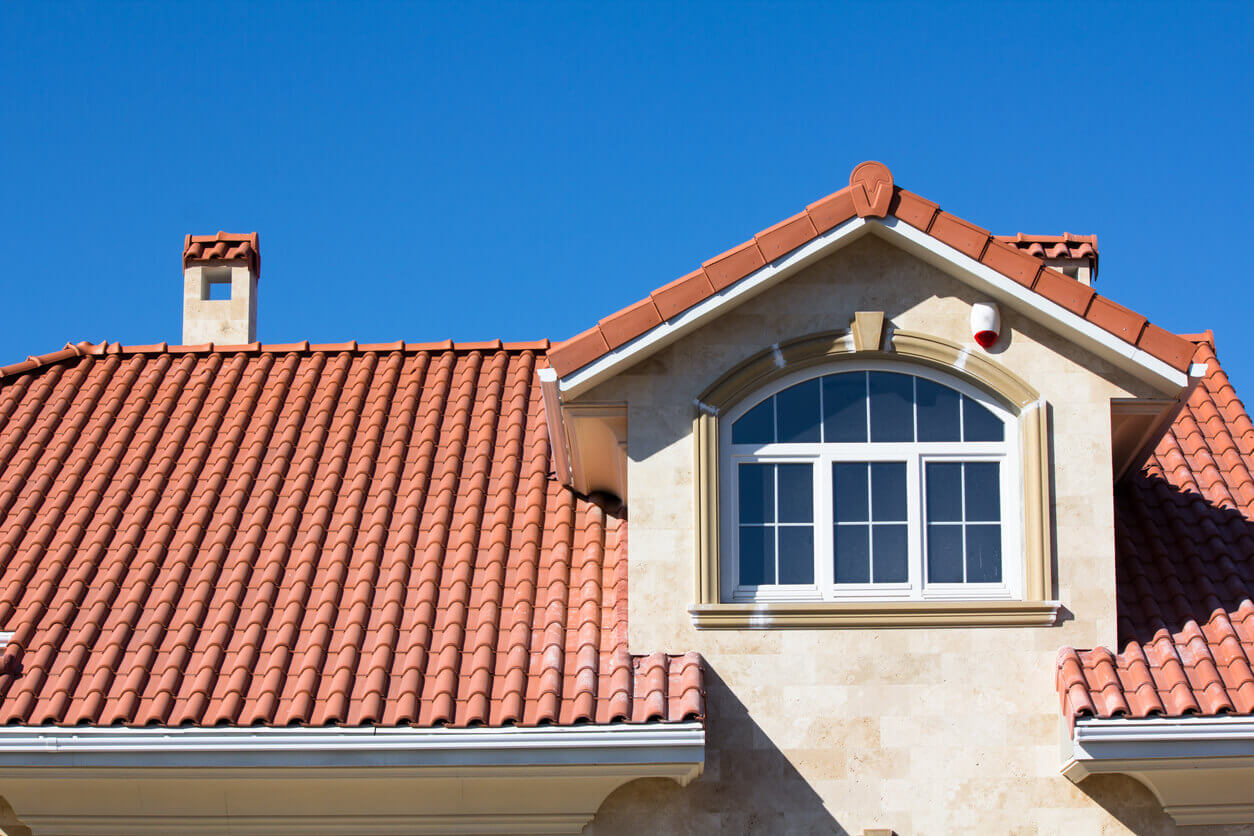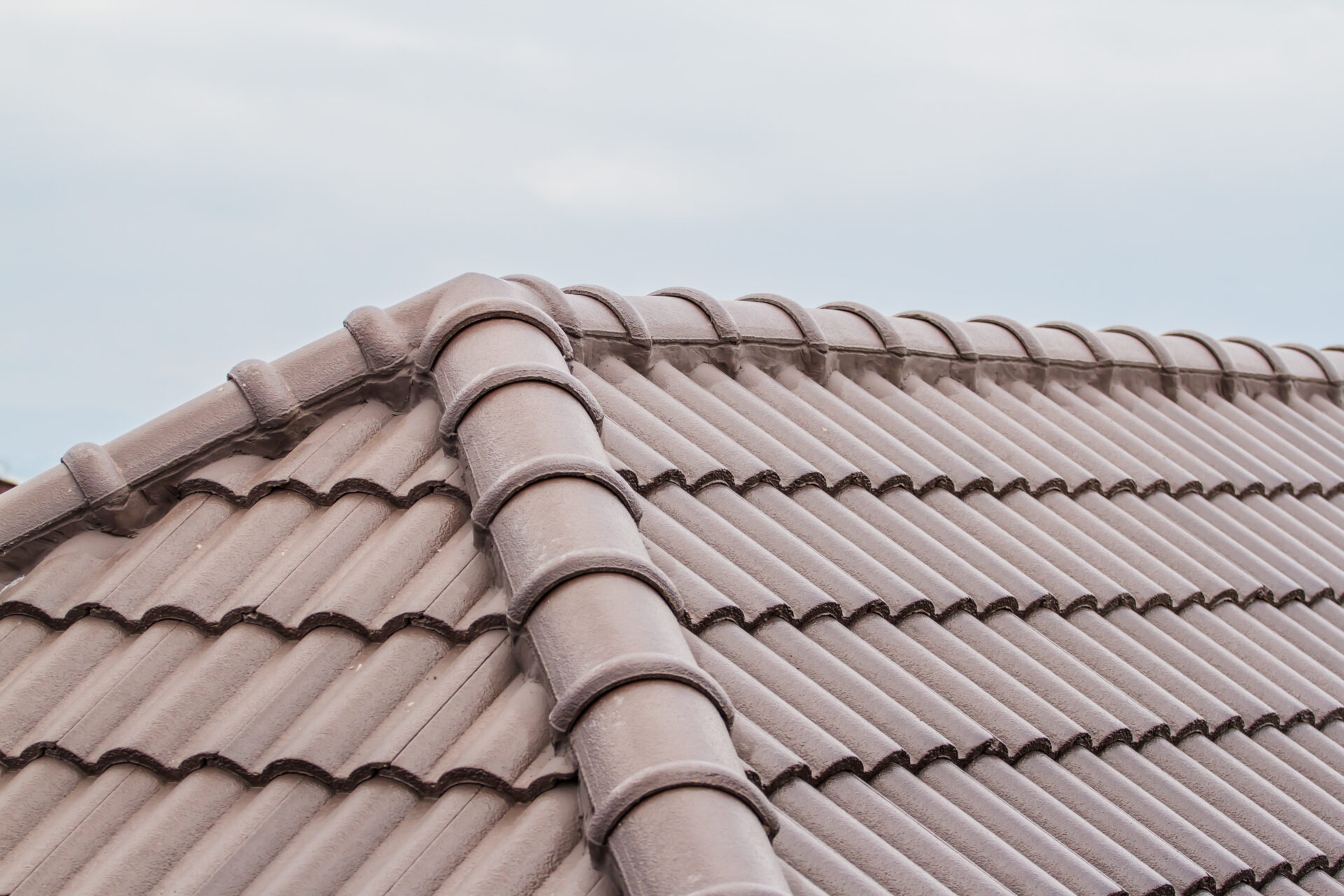
08 Jul
Choosing the Right Tile Roofing Material: Clay vs. Concrete
Are you struggling to decide on the perfect roofing material for your property? It significantly impacts the building’s aesthetic appeal, durability, maintenance requirements, and energy efficiency. In Los Angeles, where the climate is predominantly sunny and warm, tile roofing has gained popularity for its ability to withstand harsh weather conditions while adding a touch of elegance to any property.
Tile roofing is particularly favored in Los Angeles due to its longevity and minimal maintenance needs. The two main types of tile roofing materials are clay and concrete. Each has unique features and benefits, making them suitable for different preferences and needs. This article will delve into the characteristics of both clay and concrete tile roofing to help you make an informed decision.
Overview of Tile Roofing Materials
Tile roofing, using materials such as clay, concrete, metal, and slate, is a traditional roofing method that has been used for centuries. It involves covering the roof with individual tiles made from various materials, including clay, concrete, metal, and slate. Tile roofs are known for their durability, fire resistance, and ability to enhance a property’s aesthetic appeal.
Historically, clay tiles have been used since ancient times, with origins tracing back to early civilizations in Greece, Rome, and China. In contrast, concrete tiles are a more modern innovation, gaining popularity in the 20th century due to their versatility and cost-effectiveness. Today, both clay and concrete tiles are popular choices for residential and commercial buildings, providing a diverse selection of styles and finishes to complement a wide range of architectural designs.
Clay Tile Roofing

Aesthetic Appeal
Clay tiles are known for their earthy tones, classic appearance, and enduring charm. Available in various colors, shapes, and textures, clay tiles can complement any architectural style, from Mediterranean and Spanish to modern and contemporary. One of the distinctive features of clay tiles is their ability to age gracefully, developing a unique patina over time that enhances their charm and character.
Durability and Longevity
Clay tiles are incredibly durable and can last for over a century with proper care. They are resistant to fire, rot, and insect damage, making them an excellent choice for long-term investment. In Los Angeles, clay tiles perform exceptionally well under the intense sun and occasional rain. Their natural composition allows them to withstand extreme temperatures without warping or deteriorating.
Maintenance and Care
While clay tiles require minimal maintenance, routine inspections and cleaning are essential to preserving their longevity. Removing debris, moss, and algae buildup helps maintain the roof’s appearance and functionality. In cases of damage, individual tiles can be replaced without affecting the overall structure, making repairs relatively straightforward and cost-effective.
Environmental Impact
Clay tiles are an environmentally friendly roofing option. Made from natural materials, they are recyclable and have a low environmental impact during production. Additionally, clay tiles provide excellent insulation, reducing the need for artificial cooling and heating, which can lead to significant energy savings. Their thermal mass helps regulate indoor temperatures, creating a more comfortable living environment year-round.
Concrete Tile Roofing

Aesthetic Appeal
Concrete tiles offer a diverse selection of styles and finishes, including options that mimic traditional clay tiles, wood shakes, slate, and stone. They can be manufactured to mimic the appearance of traditional clay tiles, wood shakes, slate, and even stone, allowing for greater customization to match any architectural style. With a vast range of colors and textures, concrete tiles provide endless design possibilities, ensuring that each roof can have a unique look.
Durability and Longevity
Concrete tiles are highly durable and can last 50 to 70 years or more with proper maintenance. They are designed to withstand harsh weather conditions, including high winds, heavy rain, and extreme temperatures, making them suitable for the diverse climate of Los Angeles. Unlike other roofing materials, concrete tiles do not warp, curl, or become brittle over time, ensuring consistent performance throughout their lifespan.
Maintenance and Care
Concrete tiles require minimal maintenance compared to other roofing materials. Regular inspections and cleaning to remove debris, moss, and algae will help keep the roof in optimal condition. Although concrete tiles are durable, they can still crack or break under extreme conditions. Fortunately, like clay tiles, individual concrete tiles can be replaced without disrupting the entire roof structure, making repairs manageable and cost-effective.
Environmental Impact
Concrete tiles are environmentally friendly due to their long lifespan, recyclability, and the use of recycled materials in their production. Many manufacturers produce concrete tiles using recycled materials, reducing their environmental footprint. Additionally, concrete tiles offer excellent energy efficiency by providing natural insulation, which helps reduce heating and cooling costs. Their thermal mass helps stabilize indoor temperatures, contributing to a more energy-efficient home.
Cost Comparison
Initial Costs
The initial cost of roofing materials can vary widely, ranging from $700 to $1,000 per square for clay tiles and $400 to $700 per square for concrete tiles. Generally, concrete tiles tend to be more affordable than clay tiles. However, prices can vary depending on the specific style, finish, and manufacturer.
Long-term Value
When considering long-term value, both clay and concrete tiles offer excellent cost-effectiveness due to their durability and longevity. Although clay tiles have a higher upfront cost, their lifespan can exceed 100 years, making them a worthwhile investment. Concrete tiles, with a lifespan of 50 to 70 years, also provide significant long-term value. Both materials can result in significant savings on energy bills and maintenance costs throughout the lifespan of the roof. For example, the energy efficiency of clay and concrete tiles can lead to annual savings of up to 20% on heating and cooling expenses.
Installation Process
Preparation
Proper roof structure and preparation are essential for the successful installation of both clay and concrete tiles. The roof deck must be inspected and reinforced to support the weight of the tiles, ensuring a secure and durable installation. Additionally, a waterproof underlayment should be installed to provide an extra layer of protection against moisture.
Installation Steps
- Roof Inspection and Preparation: Ensure that the roof deck is structurally sound, free of damage, and able to withstand the weight of the tiles for a secure installation. Install a waterproof underlayment.
- Layout Planning: Plan the layout of the tiles to ensure even coverage and proper alignment.
- Starter Tiles: Install the starter tiles along the eaves to provide a secure base for the first row of tiles.
- Tile Installation: Begin laying tiles from the bottom edge of the roof, working upward. Secure each tile with appropriate fasteners.
- Cutting and Fitting: Cut tiles to fit around roof features such as vents, chimneys, and valleys.
- Ridge and Hip Tiles: Install ridge and hip tiles to cover the roof’s peak and corners, ensuring a watertight seal.
- Final Inspection: Conduct a final inspection to ensure all tiles are securely in place and the roof is properly sealed.
Time and Labor
Concrete tiles are typically faster to install than clay tiles, thanks to their uniform size and shape, reducing overall installation time. Clay tiles, being more fragile and varied, may require more careful handling and fitting, potentially increasing the installation time. However, both clay and concrete tiles demand experienced professionals to guarantee a precise and long-lasting installation. Proper handling, cutting, and fitting are crucial for the durability and performance of the roof. The complexity of the roof design and the size of the project can also influence the overall installation time and labor costs.
Performance in Los Angeles Climate
Weather Resistance
Clay Tiles:
- Hot and Sunny Conditions: Clay tiles excel in hot and sunny climates. They are highly resistant to UV radiation and do not fade, warp, or become brittle under prolonged sun exposure.
- Occasional Wet Weather: Clay tiles are naturally waterproof and highly resistant to rain. Their dense structure prevents water absorption, reducing the risk of frost damage and algae growth.
Concrete Tiles:
- Hot and Sunny Conditions: Concrete tiles also perform well in sunny conditions. Concrete tiles are coated with UV-resistant materials that protect them from sun damage and maintain their color over time. However, they may experience minor surface erosion over time due to intense sun exposure.
- Occasional Wet Weather: Concrete tiles are highly resistant to rain and moisture. Their dense composition prevents water absorption, making them less prone to freeze-thaw damage and moss growth.
Insulation Properties
Clay Tiles:
- Clay tiles provide excellent thermal insulation due to their natural composition and density. They help regulate indoor temperatures by keeping homes cooler in the summer and warmer in the winter. This reduces the need for excessive air conditioning and heating, resulting in energy savings.
Concrete Tiles:
- Concrete tiles also offer good insulation properties. Their thermal mass helps stabilize indoor temperatures, reducing the need for artificial heating and cooling. This can lead to significant energy savings and improved comfort throughout the year.
Expert Recommendations
When to Choose Clay Tiles:
- Architectural Style: Clay tiles are ideal for Mediterranean, Spanish, and traditional architectural styles due to their classic and timeless appearance.
- Longevity: If you prioritize longevity and are willing to invest in a roof that can last over a century, clay tiles are an excellent choice.
- Aesthetics: Choose clay tiles if you desire a roof that develops a unique patina over time, adding character and charm to your property.
When to Choose Concrete Tiles:
- Customization: If you prefer a wide variety of styles, colors, and textures to match your home’s design, concrete tiles offer greater customization options.
- Budget: For a more budget-friendly option that still provides durability and aesthetic appeal, concrete tiles are a suitable choice.
- Versatility: Concrete tiles can mimic the appearance of other materials, such as wood shakes or slate, making them versatile for various architectural styles.
Situational Considerations
- Budget: Assess your budget to determine which material offers the best value for your investment. While clay tiles have a higher upfront cost, they provide long-term benefits. Concrete tiles offer a more affordable initial investment with reliable performance.
- Architectural Style: Consider your property’s architectural style and choose the material that best complements its design. Clay tiles are ideal for traditional and historic homes, while concrete tiles offer versatility for various styles.
- Personal Preferences: Consider the following questions to guide your decision-making process: What aesthetic features are essential for your property? How much maintenance are you willing to commit to your roof? What environmental impact factors matter most to you? Both materials have unique features that cater to different needs and tastes.
For personalized advice and expert estimates, contact SpecialityRoofing today. Our experienced team will help you choose the perfect tile roofing material for your home or business in Los Angeles. Whether you prefer the timeless beauty of clay tiles or the versatile options of concrete tiles, we are here to ensure a durable and aesthetically pleasing roof. Visit our website or call us to schedule a consultation and discover how we can enhance your property with top-quality tile roofing solutions.

